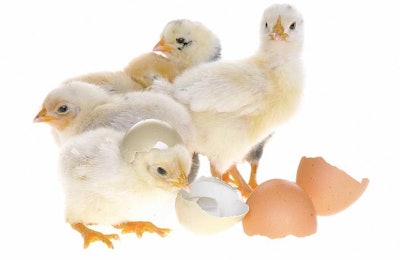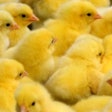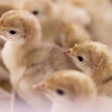
Now is as good as any time to evaluate five critical areas that often rob broiler producers from the meager profits they (occasionally) enjoy. These points are based on my own experiences, and certainly they don’t apply to each and every broiler operation. But, even if you manage to address one area with success, you might be able to prevent a number of problems that will appear during each successive batch of broilers.
Now is as good as any time to evaluate critical areas that often rob broiler producers from the meager profits they (occasionally) enjoy.
Throughout each year, we all battle against ever-emerging problems. We fight the single tree, not having enough time to sit back and observe the whole forest. This is normal, but unless you hire someone to specifically look at "strategic" issues, you’re bound to lose the "tactical" battle as problems will continue to emerge with alarming speed.
The solutions proposed are again my own and quite generic for the scope of this article. As such, your own consultants should be employed to provide more detailed and farm-specific solutions. And, a final warning: I am a consulting nutritionist, so expect these pointers to be about nutrition!
1. Is it already time to change your feeders?
Feed wastage is often discussed but rarely taken seriously. Perhaps feed wasted is feed unseen, or perhaps we believe broilers will pick it up from the ground. But, feed wastage is as good as money thrown away. Here, feeder design (and then management) is crucial in minimizing feed wastage. The old adage "you get what you pay for" certainly applies here. In other words, an up-front investment in high-tech feeders that minimize wastage can bring about huge savings, especially as more expensive feeders have a longer lifespan. Unless, of course, feed in your area is so cheap that it really does not pay to think about it. It does happen, not as often as we would like, but with globalization came ingredient price volatility, and thus, we should not expect feed to be anything but cheap. Plus, you increase "nutrient" output in litter, making disposal rather difficult — especially if you are in an area where such things are closely controlled by legislation. Bottom line, it is never too soon to invest in proper feeders if you have not done so already.
2. Why are your formulas out of sync with your genetics?
Each year, broilers grow faster with less feed (and they may suffer from it, but that’s another story). We are equipped, thus, with genetic material that can maximize floor output, but are the feeds up to match with current genetics? Quite often, they are up to five years behind, either wasting nutrients or not providing enough. This is a very common complaint, as broiler producers tend to compare flock performance with each other. Given the limited number of available hybrids, and the similarity of facilities, one can only (and quite often does) blame nutrition; whereas nutritionists will be quick to blame diseases — I know, I am one of them! So, bottom line, check with your genetics supplier and again with your own nutritionist to ensure your formulas match the needs of your birds today.
3. Are you using the least-cost available ingredients?
Have you heard of the latest ingredient available at such low price? It used to be DDGS, then rapeseed meal, and who knows what’s next. Make sure your nutritionist or ingredient supplier is up to speed with global affairs regarding emerging ingredients. And have an eye open for locally available ingredients, usually agro-industrial by-products that can be obtained for nothing. Have you heard of pasta (macaroni) loads that are given away for the cost of transportation only because they are over- or under-cooked? Humans will object eating them, but birds will not care much as long as they are ground up and incorporated into their feeds.
4. Is it not high time to rethink about additives you don’t really need?
Last year you used a mycotoxin binder, because corn from abroad came loaded with mycotoxins. Or, perhaps, two or more years ago you had a metabolic disorder problem and your nutritionist recommended some additives, whereas your veterinarian prescribed some specific medicines. But, do you still have such problems? If they were genetics-related and you already use a different source, why do you still use all these additives? Same about the use of the so-called "summer additives." If it is snowing outside, you really don’t need them. Keep an eye on additives that solve problems, because if they are past their time, they can rob profits rather aggressively.
5. What pays the bills: feed efficiency or profitability?
Birds growing at top speed should be the most profitable, right? Wrong. This can be or not be the case. What matters is maximal profitability. Look at your feed efficiency scores, but also look at the cost per kilogram (or pound) of gain. Sometimes, a more expensive feed will speed up growth, but that extra boost will be paid by the profits you were already enjoying; zero balance is not profitable. So, work with your nutritionist to find the perfect balance between energy, protein and animal performance that will maximize profitability. Whether you define this as per bird or square meter (or foot) of facilities, or in any other way you’re familiar with, don’t let animal performance indexes obscure the real target: profitability. Only this pays the bills.

















